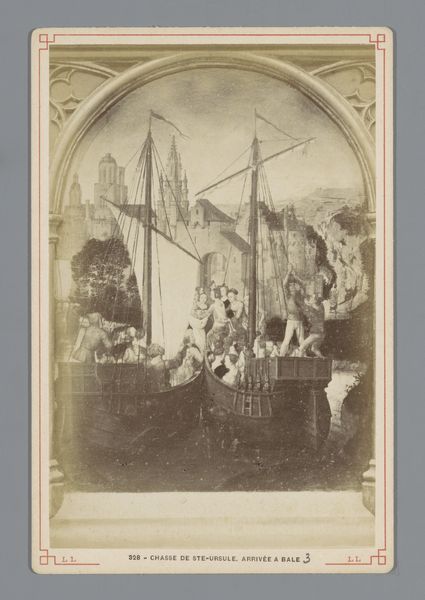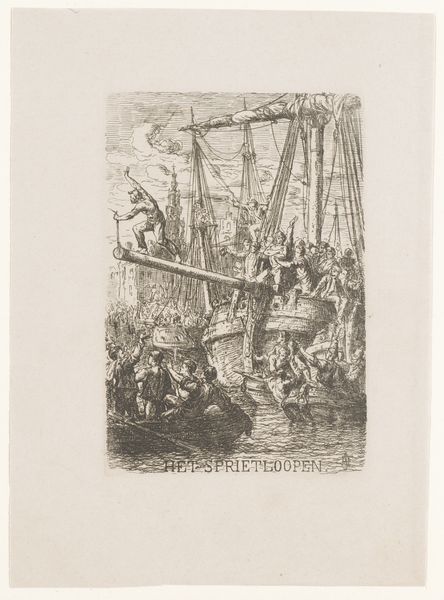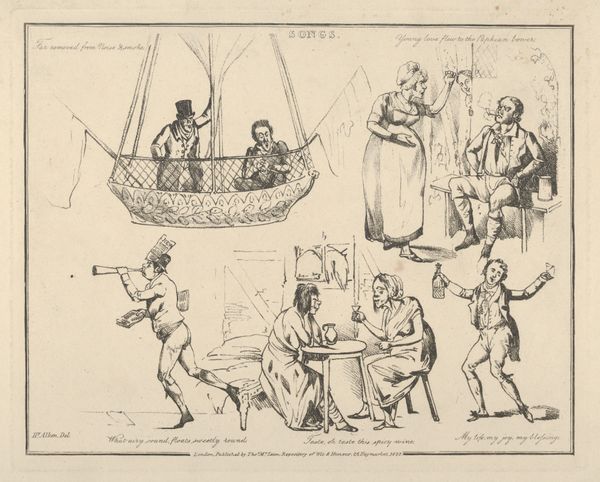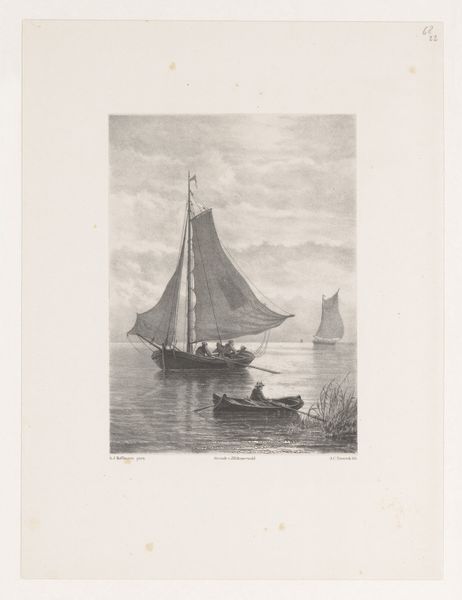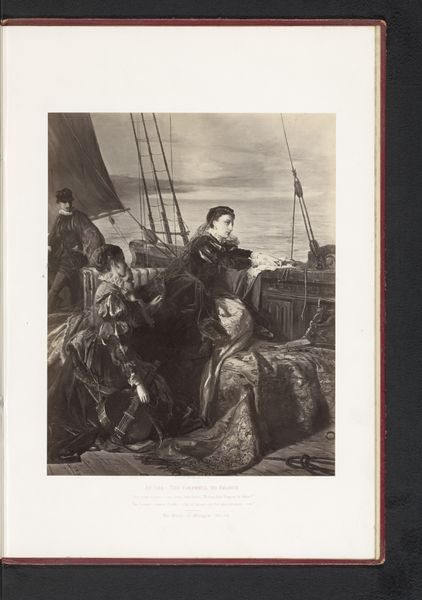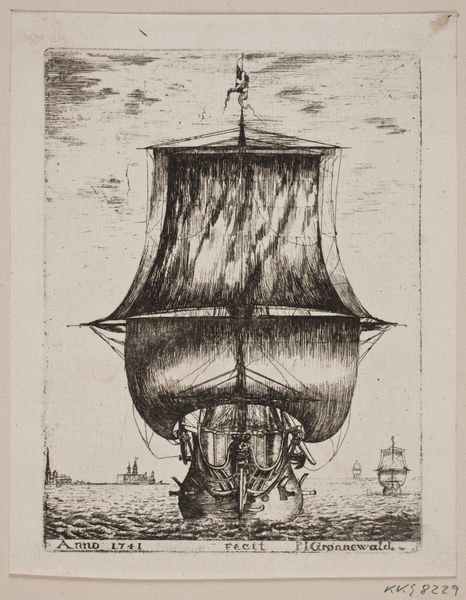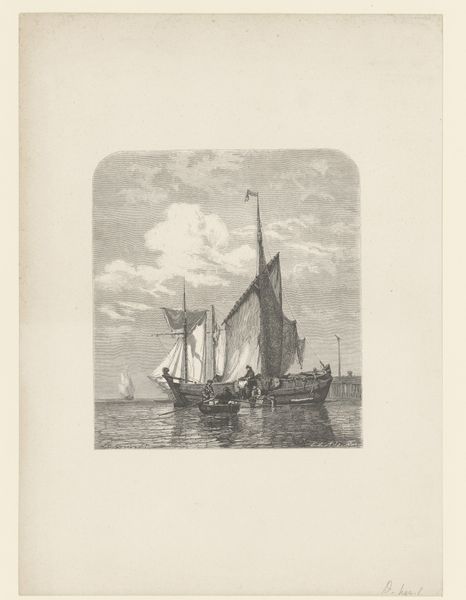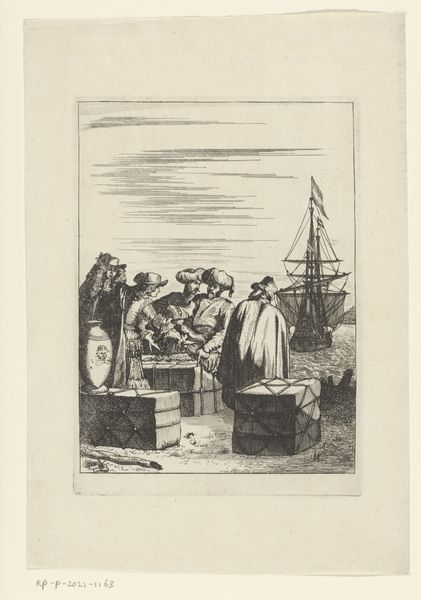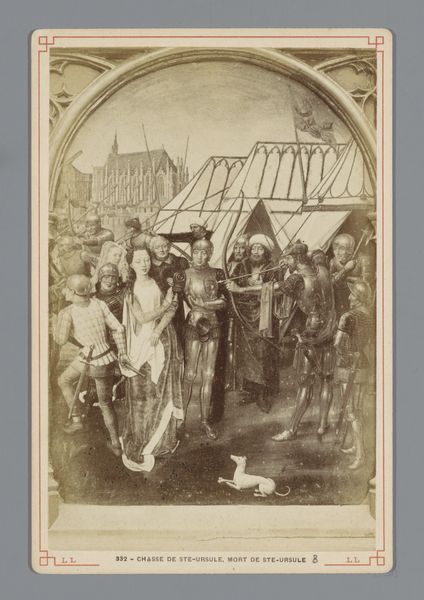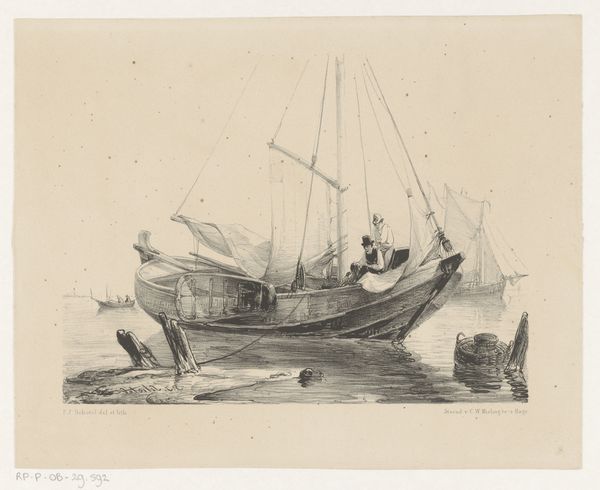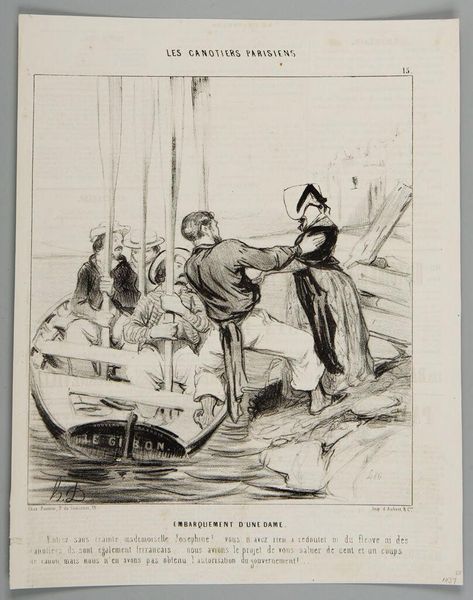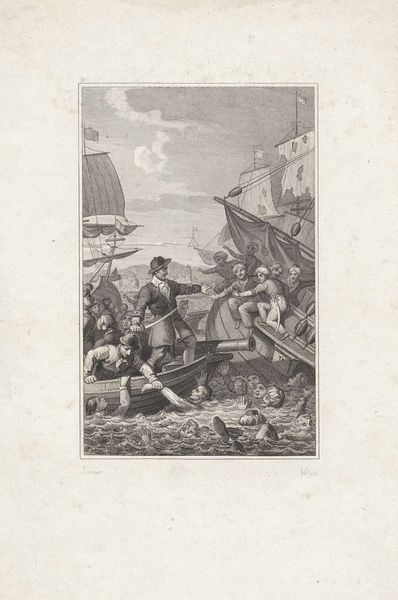
print, photography, gelatin-silver-print
#
medieval
#
narrative-art
# print
#
photography
#
gelatin-silver-print
#
history-painting
Dimensions: height 165 mm, width 109 mm
Copyright: Rijks Museum: Open Domain
Curator: I’m immediately struck by the palpable tension—the visual embodiment of an impending tragedy. There’s a weight of anxiety almost pressing out from this gelatin silver print. Editor: This is a photograph from between 1864 and 1900, of a detail from the Ursula Shrine by Hans Memling. This object depicts a moment from the legend of Saint Ursula, and I think the scene’s potency remains vivid even viewed through a lens and reproduced as a print. The label below reads, "Chasse de Ste-Ursule, massacre des Vierges." Curator: "Massacre of the Virgins," yes, the very title carries a loaded history of representing female victimhood. What does the visual language tell us about power dynamics, who gets represented and how? Consider the historical contexts and societal structures that framed such narratives. It invites discourse regarding patriarchal violence across centuries. Editor: Absolutely. It taps into archetypal imagery. Notice the archers in the foreground. Bows drawn, they’re actively participating in the brutality. Yet their eyes seem strangely vacant, their actions determined not by themself but an idea they have taken as their own. The archers’ stance mirrors similar motifs used across medieval art for aggressors, the use of such symbology solidifying the timeless interpretation of this violence. Curator: Right, this wasn’t a simple record; this photography consciously adopted tropes for very specific reasons. What is evoked? It feels very posed, but this enhances a symbolic encoding. Does it highlight complicity, dehumanization? The fact that this is derived from an already devotional object speaks to the layers of cultural and historical interpretation—it calls us to consider these issues and its resonance within various sociopolitical structures. Editor: Yes, and consider the contrast between the armored figures and the pallid faces of those in the boat. The visual impact lies in presenting impending doom in a way that links emotional tension to commonly recognised visual indicators. Curator: By looking at these works, reproduced and filtered across centuries, perhaps it holds the potential to teach, incite resistance and even rewrite some of the more harrowing historical representations surrounding power, identity, and the vulnerable. Editor: Definitely. It highlights the lasting importance of the image as a powerful instrument of both emotional interpretation, recollection and record, both faithful and, crucially, otherwise.
Comments
No comments
Be the first to comment and join the conversation on the ultimate creative platform.
